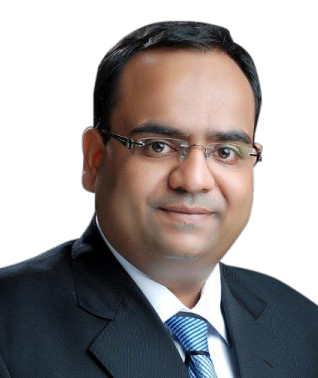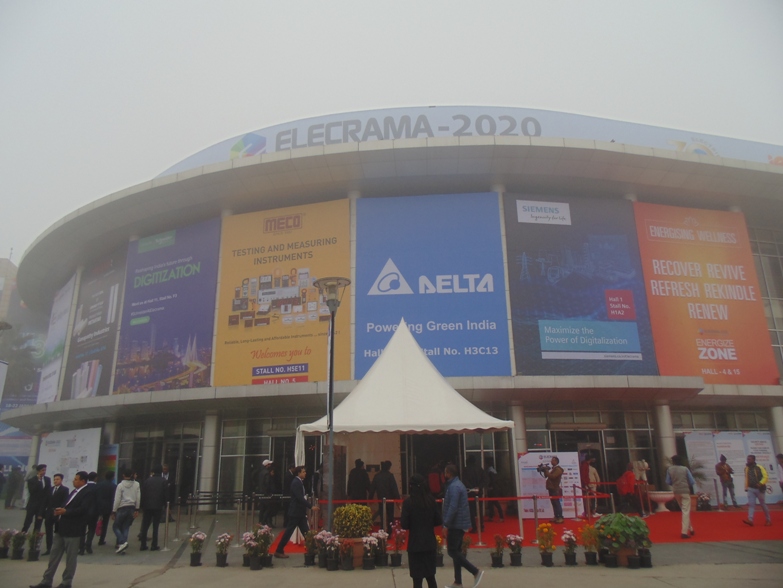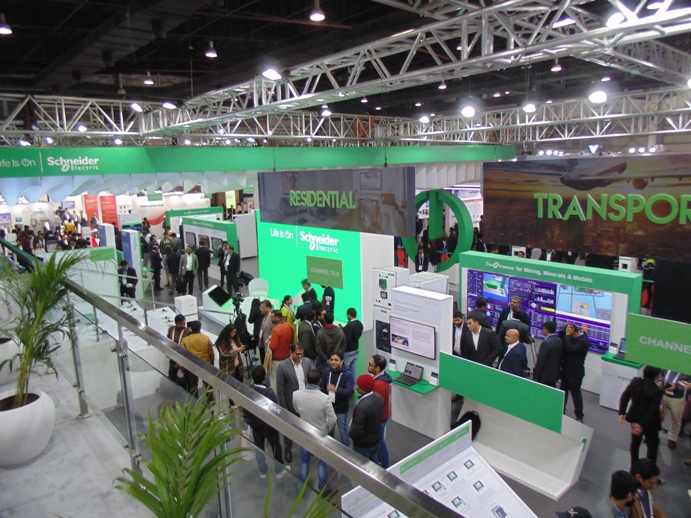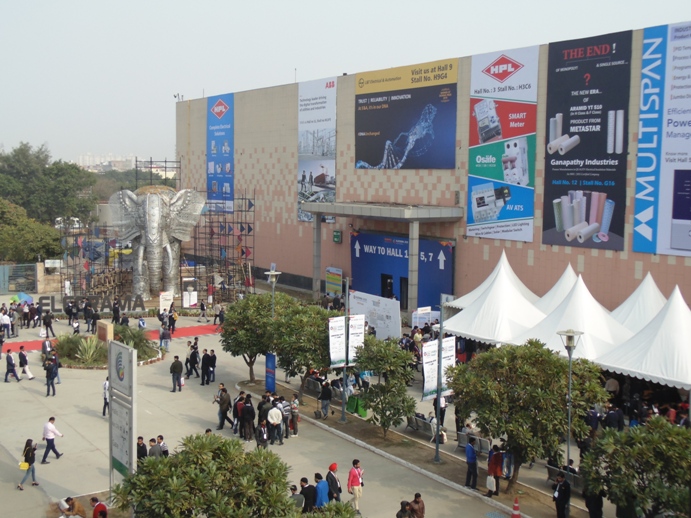 ELECRAMA – the world’s largest electricals show, organized by apex industry body IEEMA – will be coming out with its fifteenth edition in February 2023. During the recent IEEMA Convention and AGM held in Mumbai, T&D India caught up with Jitendra K. Agarwal, Chairman, ELECRAMA 2023, to closely understand how IEEMA is gearing up for the mega event. Agarwal touches upon key differentiators of ELECRAMA 2023 whilst also dwelling on some pressing industry-related issues. Jitendra K. Agarwal is confident that ELECRAMA 2023, in keeping with its tradition, is only getting bigger and better. An interview by Venugopal Pillai.
ELECRAMA – the world’s largest electricals show, organized by apex industry body IEEMA – will be coming out with its fifteenth edition in February 2023. During the recent IEEMA Convention and AGM held in Mumbai, T&D India caught up with Jitendra K. Agarwal, Chairman, ELECRAMA 2023, to closely understand how IEEMA is gearing up for the mega event. Agarwal touches upon key differentiators of ELECRAMA 2023 whilst also dwelling on some pressing industry-related issues. Jitendra K. Agarwal is confident that ELECRAMA 2023, in keeping with its tradition, is only getting bigger and better. An interview by Venugopal Pillai.
Overall, how do you see a growth in the sheer number of exhibitors in ELECRAMA 2023?
Yes, last time, which is ELECRAMA 2020, we had around 1,300 exhibitors. For the upcoming 15th Edition, ELECRAMA 2023, we are expecting well over 1,500 exhibitors.
How do you gauge the RBSM phenomenon in the upcoming ELECRAMA?
The Reverse Buyer Seller Meet (RBSM) has generally been very successful. Till the last edition (ELECRAMA 2020), Central government support was limited to developing countries, and developed countries such as the USA, European nations, etc were not included.
However, this time we will have buyers from all over the globe. In this RBSM, we are expecting over 700 buyers from across the globe – South East Asia, Africa, Latin America, North America, Europe, etc.
We will now be in a position to cover the whole world!

How is IEEMA faring with respect to extending the popularity of ELECRAMA?
We have always done domestic road shows to spread the message of ELECRAMA. However, this time, we not just targeting the larger cities but also smaller cities and towns that have industrial clusters relating to electrical equipment. We are doing road shows in such places even if there are just about 500 industrial units in the cluster.
We want that IEEMA and ELECRAMA should be known to all connected to the electrical equipment and allied industries.
What is the situation with respect to country pavilions at ELECRAMA 2023?
We are in close talks with Germany. They have shown lot of interest to become a country partner. We have also received country pavilion interest from France, Portugal, UK and Canada, among others. We are still evaluating what they will bring to the table, before we designate them as country partners.
Are there countries that would be participating in ELECRAMA for the first time?
As far as I can recall, US, Canada, Portugal, are some of the countries, which if they set up a country pavilion at ELECRAMA 2023, it would be their first time.
How is ELECRAMA becoming a platform for budding engineers and technology startups?
Like it has always been, this edition of ELECRAMA will also feature an Innovation Hub. This will be supported by Fraunhofer Society, Germany. We are also in talks with the Ministry of Commerce whereby grants could be given to startups to finance up to 95 per cent of the expenses incurred in showcasing their innovations. This tie-up with the ministry is still in progress. We are very close to getting the deal finalized. Once this is done, you can expect a lot of startups to participate in the Innovation Hub of ELECRAMA 2023.
How is ELECRAMA 2023 tackling new and emerging areas like energy storage, renewable energy, etc?
ELECRAMA 2023 will have a co-located event “eTECH nxt” that will be addressing only emerging areas like e-mobility, energy storage systems, etc. This will be a specific sub-event, within ELECRAMA 2023, focusing only on emerging areas. In fact, the brochure of this event was launched at the IEEMA Annual Convention.

Let us come to some issues relating more to IEEMA. How are you addressing the needs of smaller companies in your membership?
As an apex body of the electrical industry, IEEMA’s focus has always been to support the MSME (micro, small and medium enterprises) sector. IEEMA has a specific division focusing only on SMEs and addressing their needs. Whenever you see any activity undertaken by IEEMA, there is always a sharp focus on SMEs. Even in the Executive Council of IEEMA, there are seats reserved for SMEs. There are 20 members in the National Executive Council, and out of those 20, five are reserved for SMEs. That is the level of focus that we have on SMEs.
How were the two COVID years for IEEMA and the electrical equipment industry?
The two COVID years were very difficult for the electrical industry; there is no doubt about that! We, as an industry, have de-grown. But I think that the bad days are behind us and the future looks to be very, very bright!
Prospects for the power T&D sector look very encouraging, especially considering the impetus that the Central government has been giving to this sector.
Ten or twenty years ago, if one spoke of energy, one would think of oil. Ten years from now, if someone spoke of energy, the first thing that would come to our mind would be electricity. The future of electricity is indeed very bright, and that is good news for our (electrical equipment) industry.
We hear that the industry is currently facing challenges arising from a significant rise in raw material prices – aluminium, copper, CRGO, etc – as well as weakening of the Indian Rupee. How is the industry coping up with the situation?
On the raw material price front, IEEMA has always had a price variation (PV) clause that is recommended for this member companies. Due to this, the industry is able to take care of the concerns.
When it comes to the Rupee depreciating against the US Dollar, it is a major concern. We, as a nation, are still an import-dependent economy. The only way to get out of it is to increase exports. If you ask me personally, even as an industrialist, I am a net importer – importing more than exporting. However, as a country, we need to become a net exporter. That is the only way to hedge the dollar. I don’t see any other way to do it.

Do you see schemes like Revamped Distribution Sector Scheme (RDSS) helping the industry?
RDSS is the need of the hour. The Central government has very well understood that if they have to improve the utilities of this country, they have to bring about a dramatic change; and they are very persuasive this time in doing so. RDSS, over the next 5-7 years, is going to boost the industry’s fortunes in a very significant way.
Once the power utility (distribution) sector improves, you will see a huge positive impact on the country’s overall industrial sector.
We are very expensive on energy only because there are huge T&D losses. If these reduce significantly, the country will definitely be on a positive growth trajectory.
India has introduced smart metering under RDSS, using the innovative TOTEX financing model. What is your view?
The industry is fully geared up on this TOTEX (CAPEX + OPEX) journey. It needs to be noted that smart meters are directly related to the end consumer. Hence, it is a very sensitive matter and due care has to be taken while selecting the contractors for smart meter deployment. A lot of hard work has been done by the Ministry of Power in preparing equitable and comprehensive scheme guidelines and standard bidding documents. These documents ensure that only a capable bidder with adequate financial and technical strength qualifies for participation in smart metering tenders on TOTEX mode.
The industry has also played a very active role and given its inputs while these documents were under preparation. The industry is fully geared up to help the country meet all targets set by the government.
Returning to ELECRAMA, what is your broad vision for this mega event?
My personal vision as Chairman, ELECRAMA 2023 is that wherever we are today, after 10 years, ELECRAMA should be four to five times bigger. It should be like the Canton Fair, for electricity, at the global level. If you need anything in electrical or electricity under one roof, ELECRAMA is the place. That is the vision that I have. And as I have been saying, with ELECRAMA, it only gets bigger and better!
Photographs seen in this interview relate to ELECRAMA 2020, Greater Nodia, January 2020.


